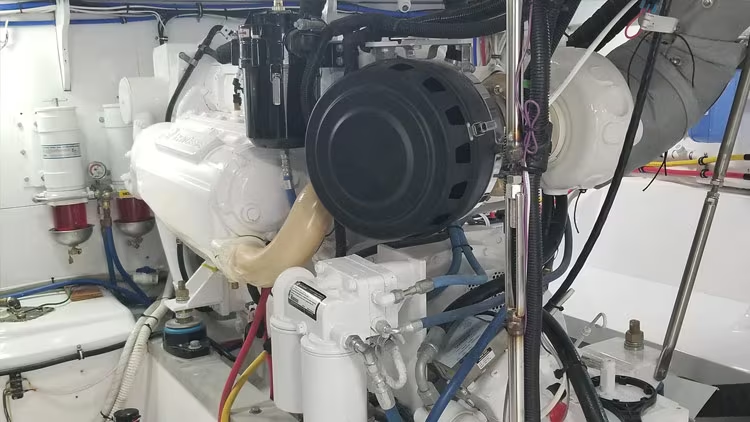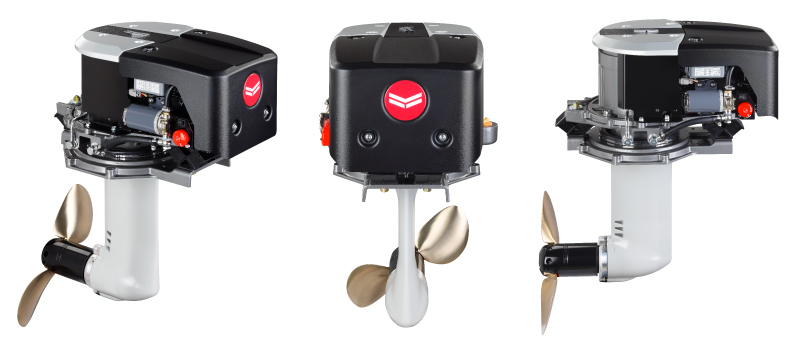Suffering from climbing maintenance costs, diminished performance or missed trips from engine failure? If so, you may consider whether to rebuild or completely replace your engine. Among the many factors to consider, operators should weigh the financial, technical and operational benefits when making such a decision.
Assuming operators are looking to upgrade from an older model, the major advantage of rebuilding an existing engine is the project’s initial capital cost is likely less than replacing it altogether— given that the parts are readily available and that the block has replaceable cylinder liners. However, if the engine has a parent bore block (no cylinder liners), the cylinder bores should be professionally calibrated to ensure they are within manufacturer’s specifications before proceeding with a rebuild.
Another benefit of rebuilding existing engines is the potential time savings. However, if operators have the option to replace an engine with one that has a similar footprint and performance criteria, time may not be as big of a factor. Users should also consider the condition of the transmission separate from the engine condition — whether it can be overhauled or if it also requires replacement.
While the benefits of rebuilding an existing engine are many, opting for a complete repower is also a viable solution. The electronic engine control and fuel system technology available today offers operators significant advantages in optimising engine performance, monitoring and control — more specifically reduction in visible black smoke, vessel acceleration, manoeuvrability, and consumption of fuel and oil, as well as increased engine monitoring. Additionally, a repower provides the opportunity to increase propulsion power and vessel speed.rebuild-or-repower-story-1
Technical factors in an engine repower
If operators choose to pursue an engine repower, several considerations should be made:
1. Propeller match — If the power outputs are different on the replacement engine, operators may need to modify or change the propeller characteristics to obtain the desired vessel performance.
2. Transmission compatibility — If the operator plans to change the engine but keep the existing transmission, it is paramount to ensure that the transmission is rated to handle the torque and rpm of the new engine.
3. Propeller and driveline shafting — The operator should ensure that the existing shafting is of sufficient torsional yield strength to handle the power and torque of the new engine. This is determined by both the shaft material and the diameter of the shaft.
4. Engine installation — The overall footprint of the engine, as well as potential modifications to the stringers, exhaust, seawater and fuel piping must be carefully considered. When looking for a new engine model, review available installation requirements and engine specifications regarding exhaust back pressure limits, radiated heat, air consumption, seawater inlet restriction and fuel inlet restriction. These items are critical and may necessitate additional modifications to ensure proper installation.
5. Engine and transmission controls — If the operator chooses to change or keep the existing engine and transmission controls, compatibility with the new engines must not be overlooked.
6. Serviceability — Once everything else is accounted for, ensure there is sufficient space in the engine compartment to perform maintenance on the new engine.

Financial and operational considerations of an engine repower
Beyond the upfront capital cost of the project, operators should consider the financial impact of replacing versus rebuilding their engine. These can include changes in maintenance and fuel cost — due to differences in fuel efficiency — as well as in diesel exhaust fluid consumption, if applicable. When evaluating maintenance costs, analyse the different prices of parts, as they can differ greatly between brands. One way to do this is through requesting quotes for the price of regular maintenance parts from multiple engine suppliers.
Other factors to be weighed are the operational advantages associated with predicted reliability, an increase in vessel speed, and a reduction in noise and visible smoke. These key operating attributes are directly related to overall profitability, whether it be an impact on ticket sales or reduced downtime due unscheduled maintenance.
In order to wade through the numerous factors impacting this decision, users can utilize the Net Present Value (NPV) method to help reach an objective outcome. The NPV method weighs each option based on the predicted revenues and costs over the expected life of the vessel. Using this method provides an objective means of analyzing competing options and their associated financial impact to the business. Additionally, it is beneficial to look at the financial impact of variable key financial inputs — including the future price of fuel, unscheduled maintenance costs, ticket sales, etc. This way, the operator can analyze how repowering or rebuilding may respond to these variables.
In summary, it pays to carefully weigh the outcomes of whether to repower or rebuild propulsion engines. While there are many factors at play, if the decision-making process is done in a methodical and comprehensive manner, operators have a much higher probability of making the right decision for their business.





